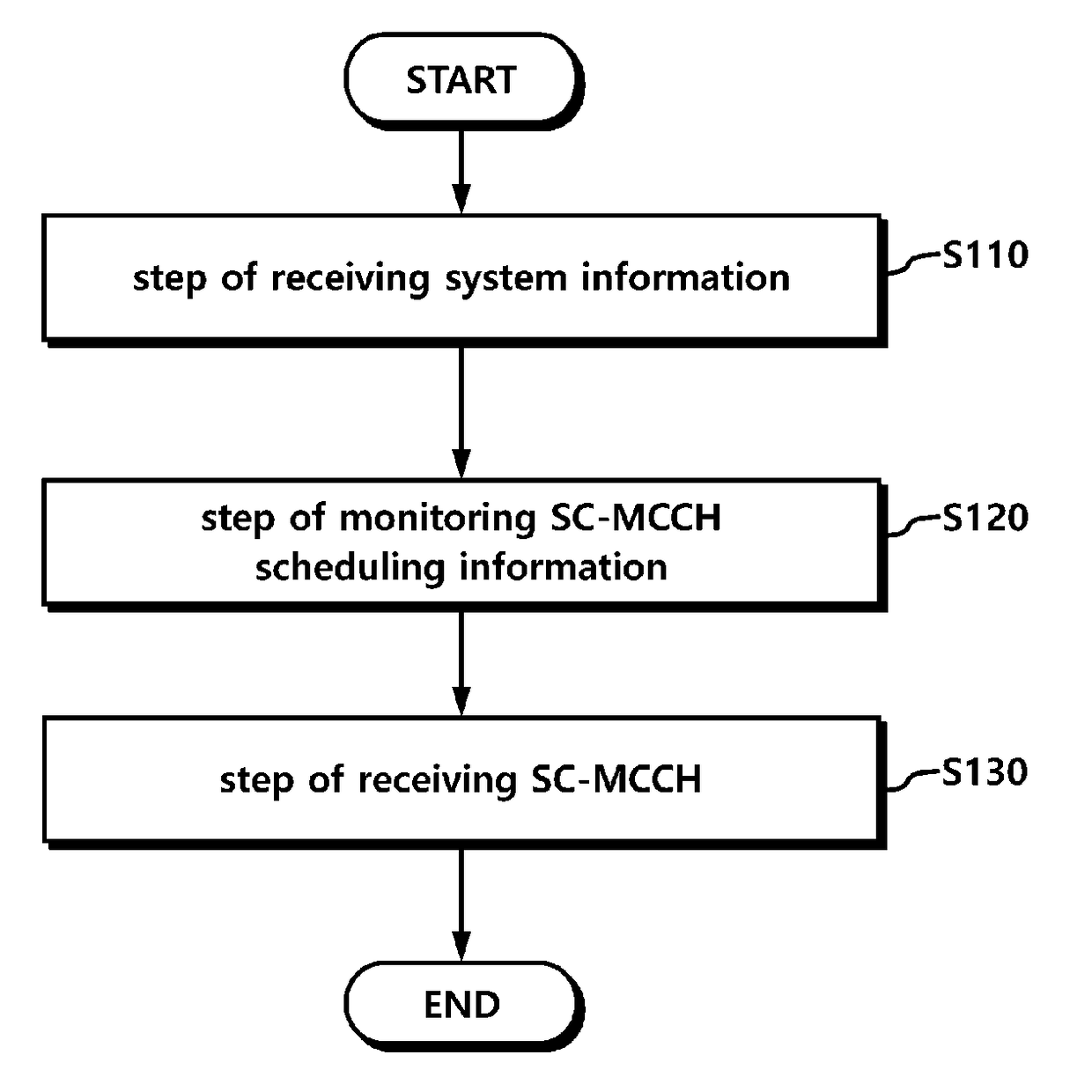Method of receiving single-cell multicast data and apparatus for same
- Summary
- Abstract
- Description
- Claims
- Application Information
AI Technical Summary
Benefits of technology
Problems solved by technology
Method used
Image
Examples
first embodiment
for Acquiring the SC-MCCH by Identifying SC-MCCH Transmission on the PDCCH Through the SC-RNTI
[0083]When the UE is configured to decode the PDCCH (hereinafter, referred to as a PDCCH for convenience of description, but may be an MPDCCH or an NPDCCH) which is CRC-scrambled with the SC-RNTI, the UE should decode the PDCCH and the PDSCH (hereinafter, referred to as a PDSCH for convenience of description but may be an MPDSCH or an NPDSCH) addressed by the PDCCH. to SC-MCCH transmission, associated radio resources, and MCS may be indicated on the PDCCH.
[0084]The SC-PTM-capable BL UE, CE UE, or NB-IoT UE may receive SC-MCCH information on the PDSCH / MPDSCH / NPDSCH according to detailed scheduling information scrambled with the SC-RNTI on the PDCCH / MPDCCH / NPDCCH. The BS may transmit SC-MCCH information on the PDSCH / DL-SCH associated (with the scrambled / addressed detailed scheduling information) on the PDCCH.
[0085]A relative PDSCH start time for the PDCCH may be signaled through one of a sche...
second embodiment
ring an SC-MCCH Through Detailed Scheduling Information on System Information
[0099]The SC-MCCH is transmitted at every SC-MCCH repetition period. In order to efficiently use the periodically transmitted SC-MCCH, the BS may transmit the SC-MCCH for the SC-PTM-capable BL UE, CE UE, or NB-IoT UE without PDCCH.
[0100]For example, the BS may include detailed time or frequency domain scheduling information for receiving SC-MCCH information of the BL UE or the CE UE on system information block type 20 (SystemInformationBlockType20 or SystemInformationBlockType20-NB) containing information required for acquiring control information associated with MBMS transmission using SC-PTM by the BS.
[0101]For example, the BS may include narrow-band (index) information for broadcasting the SC-MCCH to the BL UE and the UE that supports CE through system information block type 20.
[0102]In another example, the BS may include frequency-hopping configuration information for broadcasting the SC-MCCH to the BL ...
third embodiment
iring an SC-MCCH Through Detailed Scheduling Information on System Information
[0135]A transmission period specifying the SC-MCCH may be designated and repeatedly transmitted within the corresponding period. The BS may transmit the SC-MCCH for the SC-PTM-capable BL UE, CE UE, or NB-IoT UE without PDCCH.
[0136]For example, detailed time or frequency domain scheduling information for receiving SC-MCCH information of the BL UE or the CE UE may be included in system information block type 20 (SystemInformationBlockType20 or SystemInformationBlockType20-NB) containing information required for acquiring control information associated with MBMS transmission using SC-PTM by the BS.
[0137]For example, the BS may include narrow-band (index) information for broadcasting the SC-MCCH to the BL UE and the UE that supports CE through system information block type 20.
[0138]In another example, the BS may include frequency-hopping configuration information for broadcasting the SC-MCCH to the BL UE and t...
PUM
 Login to View More
Login to View More Abstract
Description
Claims
Application Information
 Login to View More
Login to View More - R&D Engineer
- R&D Manager
- IP Professional
- Industry Leading Data Capabilities
- Powerful AI technology
- Patent DNA Extraction
Browse by: Latest US Patents, China's latest patents, Technical Efficacy Thesaurus, Application Domain, Technology Topic, Popular Technical Reports.
© 2024 PatSnap. All rights reserved.Legal|Privacy policy|Modern Slavery Act Transparency Statement|Sitemap|About US| Contact US: help@patsnap.com










